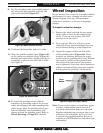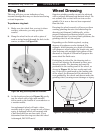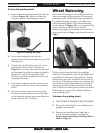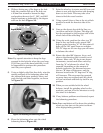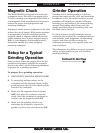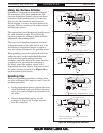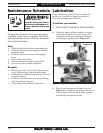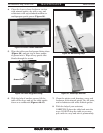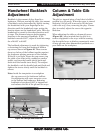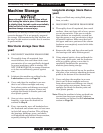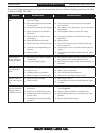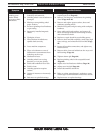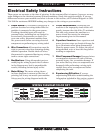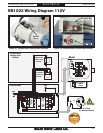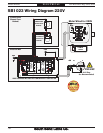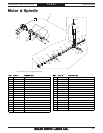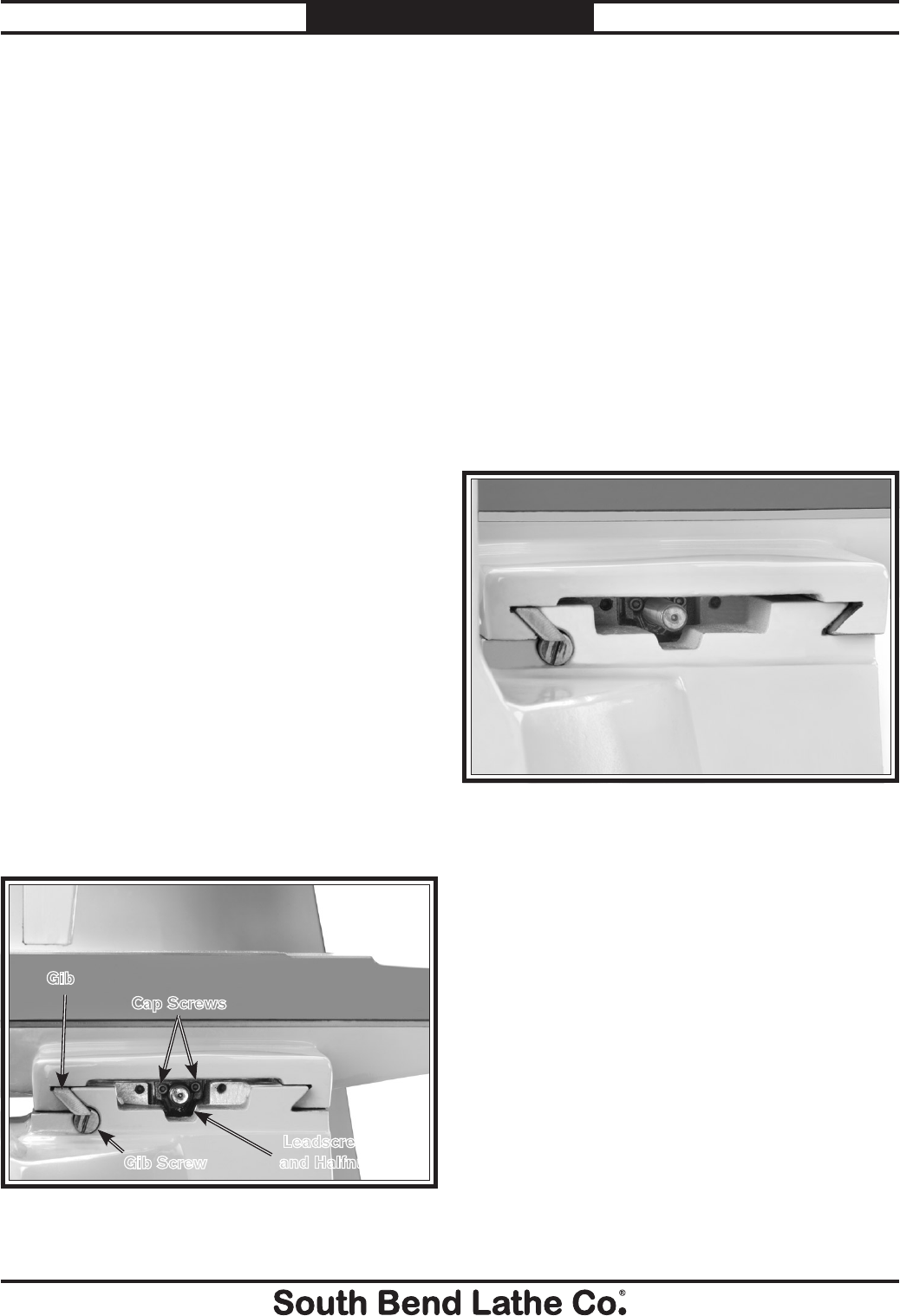
-32-
For Machines Mfg. Since 8/09
Model SB1023
MAINTENANCE
Backlash is the amount of play found in a
leadscrew. Without moving the table, the amount
of backlash can be determined by lightly turning
the handwheel with your fingertips in one
direction until the handwheel stops, noting the
location shown on the handwheel scale. Then the
handwheel is turned in the other direction until
it stops. The distance between both stopping
locations is the amount of backlash. If the
backlash exceeds 0.007", adjust it back into range
the of 0.003" to 0.006".
The backlash adjustment is made by tightening
or loosening the cross-feed leadscrew halfnut
cap screws shown in Figure 42. These screws
draw two halves of the halfnut together against
the leadscrew placing pressure on the threads.
If this fit is too tight, loosen the cap screws, tap
the table a few times with a rubber or wooden
mallet, and turn the handle slowly back-and-
forth until the handle turns freely. To readjust
the backlash, rock the handle back-and-forth and
tighten the screws slowly until the backlash is
correct.
Note: Avoid the temptation to overtighten
the cap screws at the leadscrew halfnut.
Overtightening will cause excessive wear
to the halfnut and leadscrew. Reducing
backlash to less than 0.003" is impractical
and reduces the life of the gib and the ways.
The gib is a tapered piece of steel that is held in
position by a gib screw. When the screw is turned
clockwise, the gib will be moved to fill the loose
void in the way, thus, removing the play. If more
play is needed, adjust the screws the opposite
direction.
When adjusting the table or column gib screw
(Figure 43), keep in mind that the goal is to
remove sloppiness in the ways without causing
the dovetailed ways to bind or prematurely wear.
A loose gib can cause dimensional problems or a
poor finish on the workpiece.
Column & Table Gib
Adjustment
Handwheel Backlash
Adjustment
Figure 43. Column gib and leadscrew.
Figure 42. Table gib and leadscrew.
Leadscrew
and Halfnut
Cap Screws
Gib Screw
Gib



